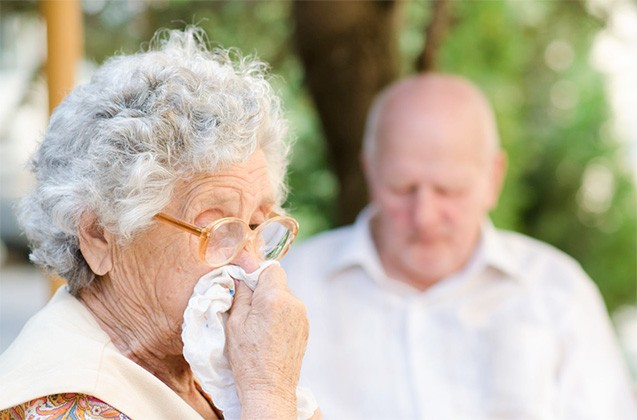

CDC Flu Season Guide for Nursing Homes and Long-Term Care Facilities
Americans are spreading more than holiday cheer this winter as the flu and other respiratory viruses are increasing across the country.
“Americans gathered for Thanksgiving last week amid a flu season that’s worse than any has been in more than a decade, and experts continue to urge caution as multiple respiratory viruses circulate at high levels nationwide,” reported CNN. “A growing number of US states – now 33 – are experiencing “high” or “very high” respiratory virus activity, and seasonal flu activity continues to be “elevated across the country,” according to the US Centers for Disease Control and Prevention (CDC).”
Influenza-positive tests reported to the CDC by U.S. clinical laboratories have skyrocketed from 2.68 percent positivity rate two months ago to 25.06 percent.
“Seasonal influenza activity is high and continues to increase across the country,” says the CDC, estimating that so far this season there have been at least 8.7 million illnesses, 78,000 hospitalizations, and 4,500 deaths from flu.
The number of long-term facilities nationwide reporting at least one confirmed influenza-positive test among residents increased from 50 at the start of October to 364 at the end of November.
“Influenza can be introduced into a long-term care facility by newly admitted residents, healthcare personnel, and visitors. The spread of influenza can occur between and among residents, healthcare personnel, and visitors. Residents of long-term care facilities can experience severe and fatal illness during influenza outbreaks,” says the CDC.
The CDC says that preventing the transmission of influenza viruses and other infectious agents within long-term care facilities requires a multi-faceted approach that includes the following:
- Influenza Vaccination
- Influenza Testing
- Infection Prevention and Control Measures
- Antiviral Treatment
- Antiviral Chemoprophylaxis
Preparing Long-Term Care Facilities for Flu Outbreaks
The CDC says that preparing nursing homes and long-term care facilities prior to flu outbreaks is important with vaccination, surveillance, and testing all crucial.
CDC guide on vaccinations for residents and healthcare personnel of long-term care facilities includes:
- Residents: If possible, all residents should receive inactivated influenza vaccine (IIV) annually before the influenza season.
- Healthcare Personnel: CDC recommends that all U.S. healthcare personnel get vaccinated annually against influenza.
Typically, influenza vaccines will become available to long-term care facilities beginning in September, and influenza vaccination should be offered by the end of October.
Although vaccination by the end of October is recommended, influenza vaccine administered in December or later, even if influenza activity has already begun, is likely to be beneficial in most influenza seasons because the duration of the season is variable, and influenza activity might not occur in certain communities until February or March.
The next two steps in preparing long-term care facilities for flu outbreaks are surveillance and testing:
- Surveillance: When there is influenza activity in the local community, active daily surveillance for influenza illness should be conducted among all new and current residents, healthcare personnel, and visitors of long-term care facilities, and continued until the end of influenza season.
- Testing: Even if it’s not influenza season, influenza testing should occur when any resident has signs and symptoms of acute respiratory illness or influenza-like illness.
When There is a Confirmed or Suspected Flu Outbreak
The CDC says that if one laboratory-confirmed influenza-positive case is identified along with other cases of acute respiratory illness in a unit of a long-term care facility, an influenza outbreak might be occurring.
“Active surveillance for additional cases should be implemented as soon as possible once one case of laboratory-confirmed influenza is identified in a facility,” says the CDC. “When 2 cases of laboratory-confirmed influenza are identified within 72 hours of each other in residents on the same unit, outbreak control measures should be implemented as soon as possible.”
Implementation of outbreak control measures can also be considered as soon as possible when one or more residents have an acute respiratory illness with suspected influenza and the results of influenza molecular tests are not available on the same day of specimen collection.
The following steps should be taken:
- Perform influenza testing on upper respiratory tract specimens (i.e., nasopharyngeal swab, nasal swabs, nasopharyngeal or nasal aspirates, or combined nasal and throat swabs) of ill residents with recent onset of signs and symptoms suggestive of influenza or acute respiratory illness to determine if influenza virus is the causative agent.
- The following influenza tests are recommended:
o Molecular assays, including rapid molecular assays
o Other molecular tests
o Or reverse transcription polymerase chain reaction (RT-PCR)
Daily active surveillance for acute respiratory illnesses among all residents, healthcare personnel, and visitors to the facility should be implemented including:
- Conduct daily active surveillance until at least 1 week after the last laboratory-confirmed influenza case identified
- Test for influenza with the molecular assay in the following:
o Ill persons who are in the affected units as well as previously unaffected units in the facility
o Persons who develop acute respiratory illness symptoms after beginning antiviral chemoprophylaxis
o Ensure that the laboratory performing influenza testing notifies the facility of tests results promptly
Implementing Standard and Droplet Precautions
The CDC says that long-term care facilities should be implementing standard precautions, regardless of suspected or confirmed infections, including:
- Wearing gloves if hand contact with respiratory secretions or potentially contaminated surfaces is anticipated
- Wearing a gown if soiling of clothes with resident’s respiratory secretions is anticipated
- Changing gloves and gowns after each resident encounter and performing hand hygiene
- Perform hand hygiene before and after touching the resident, after touching the resident’s environment, or after touching the resident’s respiratory secretions
“Droplet Precautions should be implemented for residents with suspected or confirmed influenza for 7 days after illness onset or until 24 hours after the resolution of fever and respiratory symptoms, whichever is longer, while a resident is in a healthcare facility,” says the CDC.
Examples of Droplet Precautions include:
- Placing ill residents in a private room. If a private room is not available, place residents suspected of having influenza with one another
- Wear a facemask (e.g., surgical or procedure mask) upon entering the resident’s room. Remove the facemask when leaving the resident’s room and dispose of the facemask in a waste container
- If resident movement or transport is necessary, have the resident wear a facemask (e.g., surgical or procedure mask), if possible
- Communicate information about patients with suspected, probable, or confirmed influenza to appropriate healthcare personnel before transferring them to other departments
Administering Influenza Antiviral Treatment and Chemoprophylaxis
The CDC says that all long-term care facility residents who have confirmed or suspected influenza should receive antiviral treatment immediately – initiation of this treatment should not wait for laboratory confirmation of influenza.
“Antiviral treatment works best when started within the first 2 days of symptoms. However, these medications can still help when given after 48 hours to those that are very sick, such as those who are hospitalized, or those who have a progressive illness,” says the CDC.
The recommended dosing and duration of antiviral treatment is twice daily for 5 days for neuraminidase inhibitors (oseltamivir and zanamivir), and one dose for intravenous peramivir.
Exposed residents on units or wards with influenza cases in the long-term care facility (currently impacted wards) should receive antiviral chemoprophylaxis as soon as an influenza outbreak is determined.
“When at least 2 patients are ill within 72 hours of each other and at least one resident has laboratory-confirmed influenza, the facility should promptly initiate antiviral chemoprophylaxis with oral oseltamivir to all non-ill residents living on the same unit as the resident with laboratory-confirmed influenza (outbreak affected units), regardless of whether they received influenza vaccination during the current season,” says the CDC.
Antiviral chemoprophylaxis is meant for residents who are not exhibiting influenza-like illness but who may be exposed or who may have been exposed to an ill person with influenza, to prevent transmission.
CDC recommends antiviral chemoprophylaxis with oseltamivir for a minimum of 2 weeks and continuing for at least 7 days after the last known laboratory-confirmed influenza case was identified on affected units.
Antiviral chemoprophylaxis can be considered or offered to unvaccinated personnel who provide care to persons at higher risk of influenza complications.
7 Steps to Curbing the Flu in Long-Term Care Facilities
The CDC says that long-term care facilities should consider these 7 steps to curb the flu:
- Have symptomatic residents stay in their own rooms as much as possible, including restricting them from common activities, and have their meals served in their rooms when possible
- Limit the number of large group activities in the facility and consider serving all meals in resident rooms, if possible, when the outbreak is widespread (involving multiple units of the facility)
- Avoid new admissions or transfers to wards with symptomatic residents
- Limit visitation and exclude ill persons from visiting the facility via posted notices. Consider restricting visitation by children during community outbreaks of influenza
- Monitor healthcare personnel absenteeism due to respiratory symptoms and exclude those with influenza-like symptoms from work until at least 24 hours after they no longer have a fever
- Restrict healthcare personnel movement from areas of the facility having illness to areas not affected by the outbreak
- Administer the current season’s influenza vaccine to unvaccinated residents and healthcare personnel as per current vaccination recommendations
Subscribe to email updates
Related Articles

Topics

Topics

Topics



